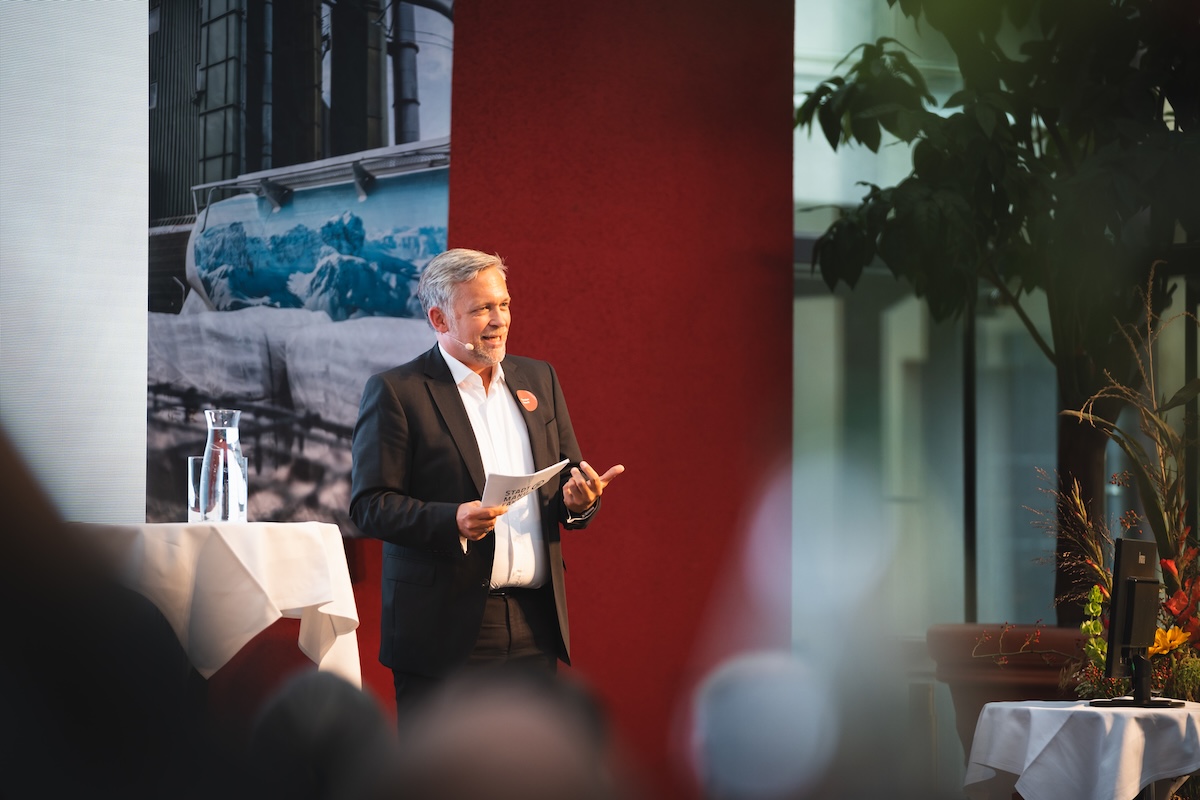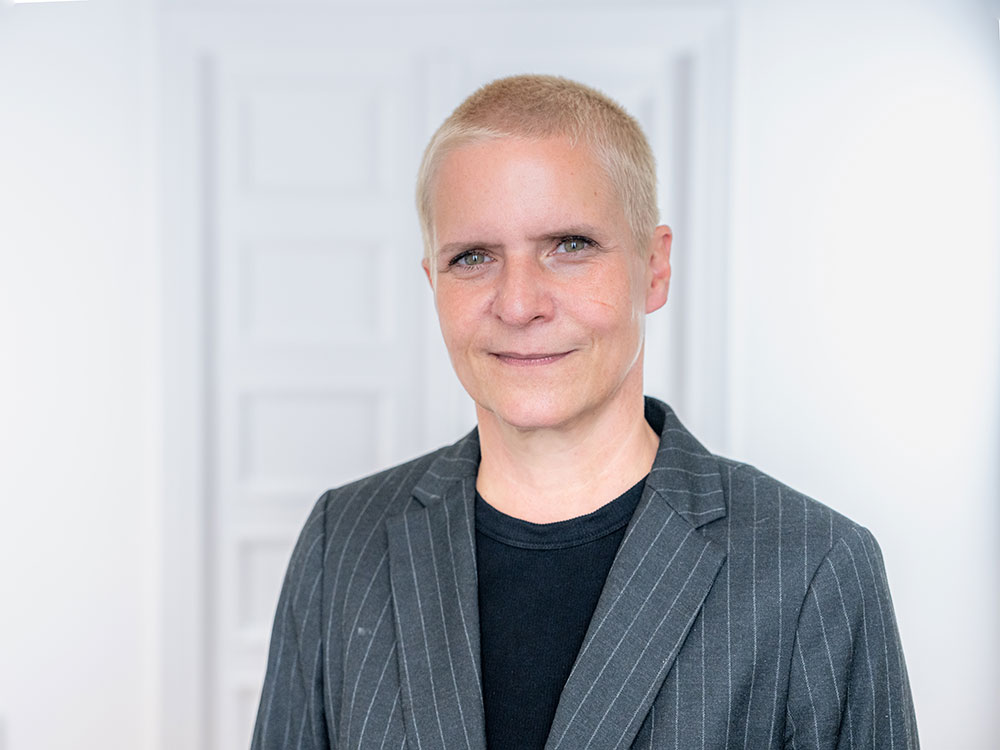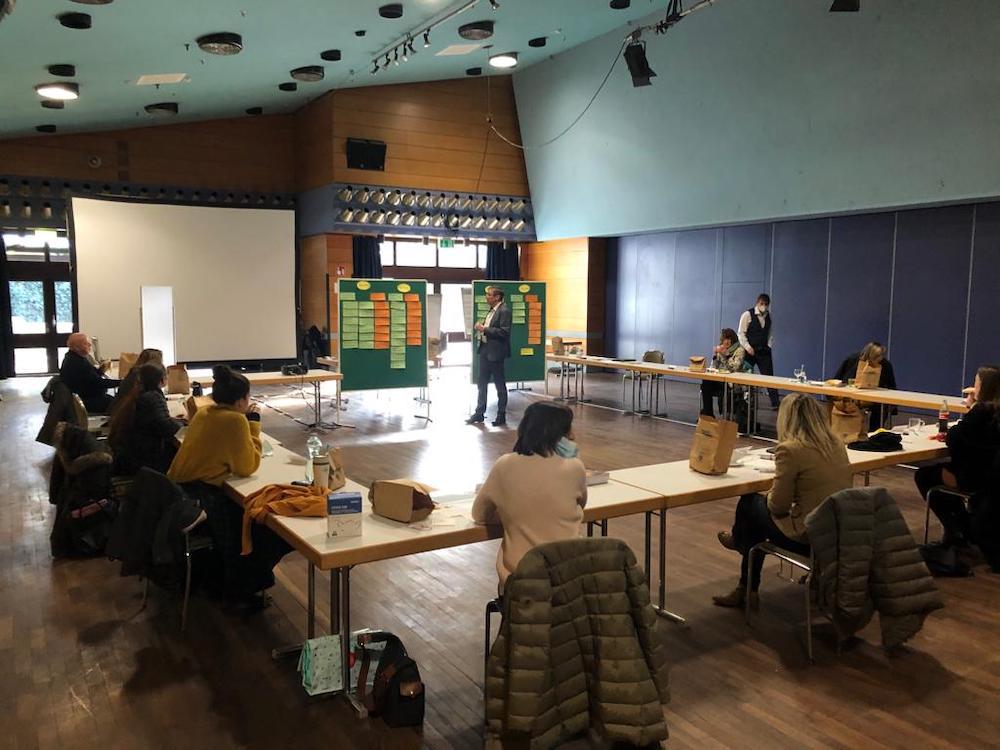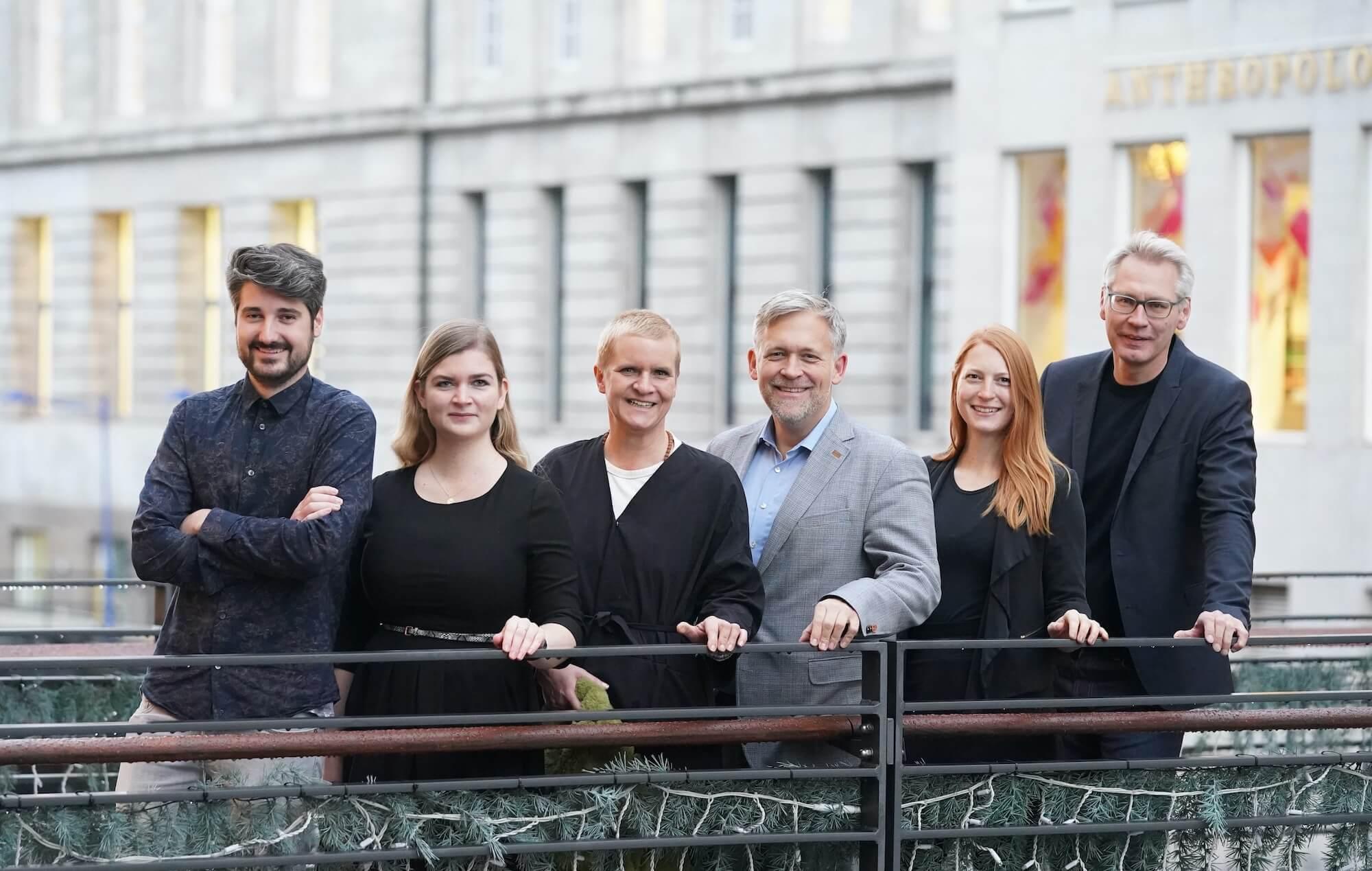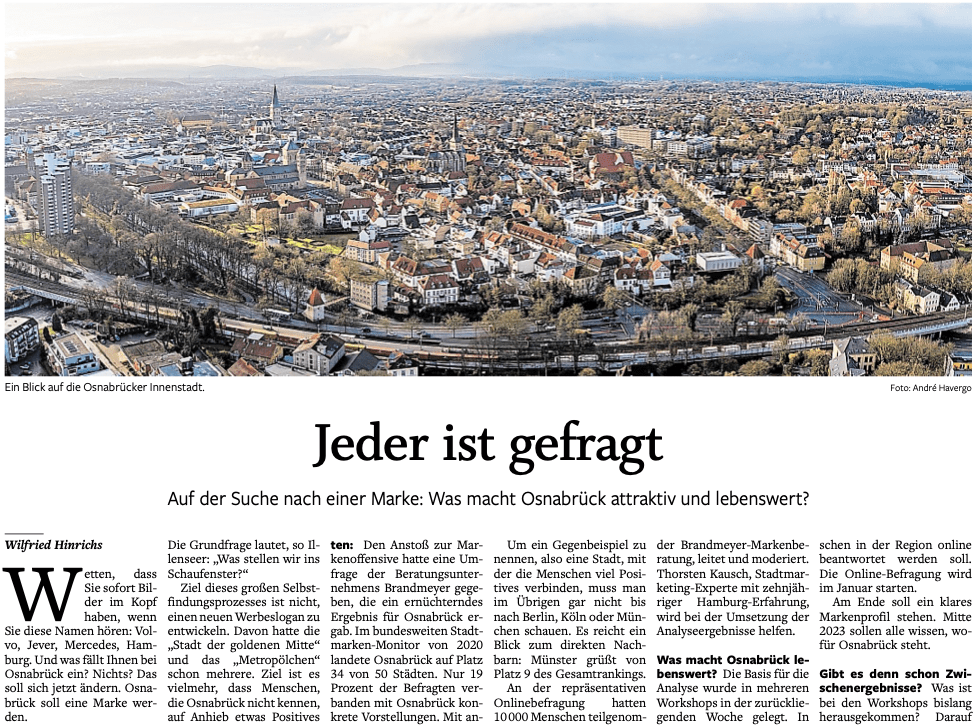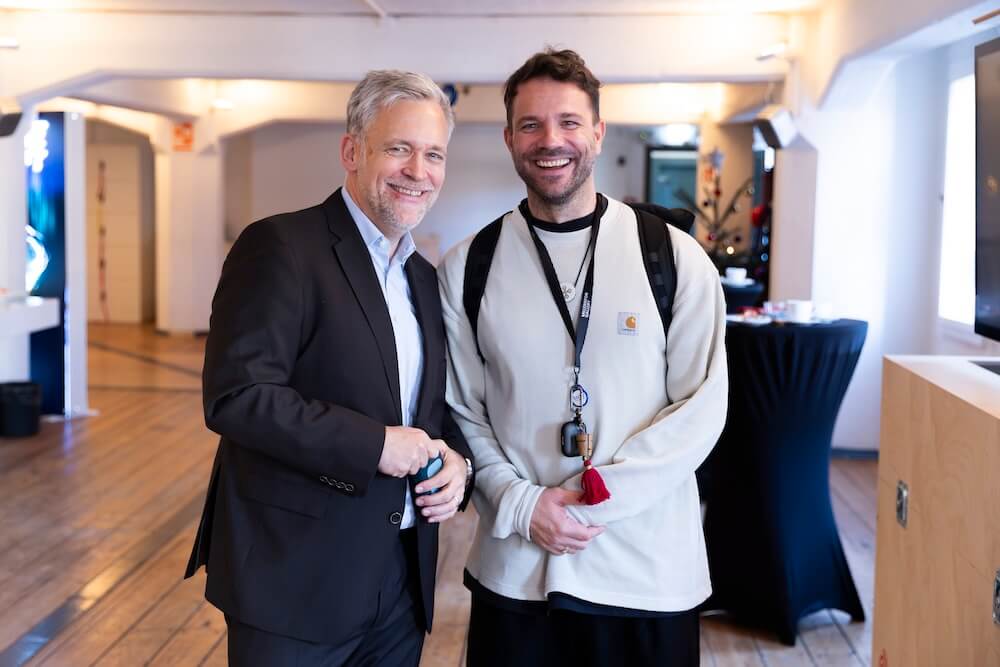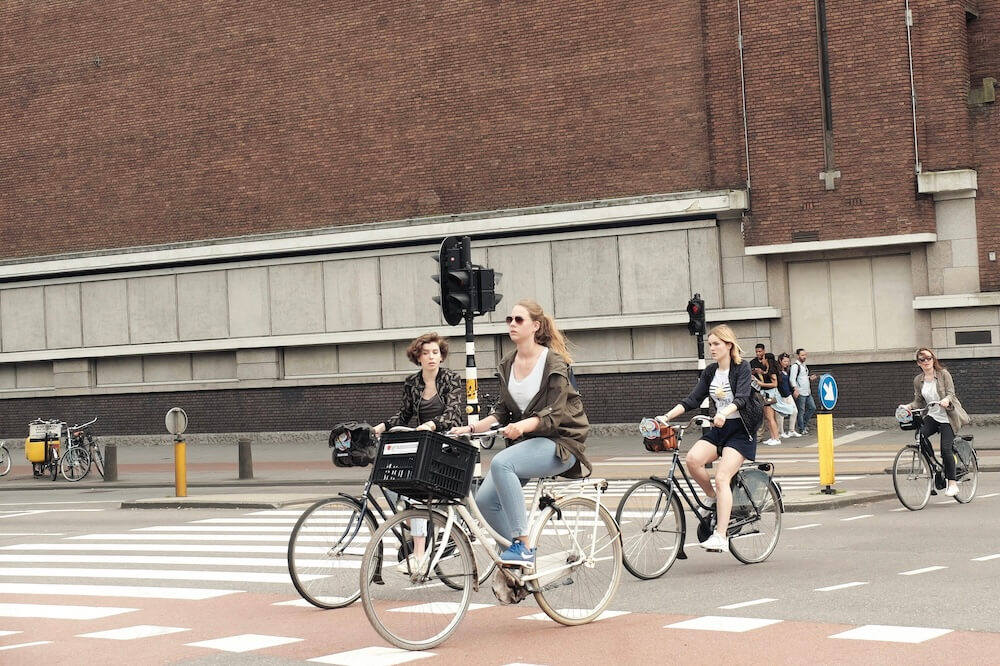CONTENT
- Financing in city marketing: pressure increases, funds dwindle
- New circumstances require creative and strategic financing models
- Strong city marketing attracts: Three door openers for strong future alliances
- The new role: City marketing as an urban platform for the future
- Consequences of the new role for partnerships and alliances
- Conclusion: Common concerns as the basis for strategic alliances – and sustainable financing

Financing in city marketing: pressure increases, funds dwindle
City marketing – whether organized as an office or a company – is under increasing pressure. The times when public funds flowed in sufficient quantities and private partners from local trade or business were actively involved are over. The reasons for this are complex:
- Municipal budgets are shrinking: Increasing expenditure on education, social affairs, climate or infrastructure is displacing soft location factors such as city marketing in the political debate.
- Economic restraint paralyzes commitment: The recession is having an impact – fewer contributions, falling budgets, increased risk aversion.
- Structural change in the retail sector: Chain stores and centralization are leading to a decline in local decision-making authority – many inner-city players simply have no room for maneuver locally.
- Sustainability and climate targets demand a rethink, but make classic formats such as events or Christmas markets more difficult in the short term.
- Volunteer resources have become thinner – not only due to Corona, but also due to overwork and a changed culture of engagement.
Abstract:
City marketing needs strategic alliances instead of classic financing models. In this article, city marketing expert Thorsten Kausch explains why this is the case. His conviction: As a platform for cooperation, communication and social cohesion, city marketing can find new partners – and become a driving force in the city of the future.
Parallel to these developments in society as a whole, the strategic and political requirements for cities, city marketing and cooperation with stakeholders are increasing:
- Cities are increasingly competing for attention, quality of life, skilled workers and future prospects.
- Stakeholder management is becoming increasingly important and – because it is a people business – takes up a lot of time and therefore resources.
- City marketing needs a new role – as a platform for participation, innovation and location communication.
New circumstances require creative and strategic financing models
We have been experiencing all of these changes for several years in our work with cities and city marketing organizations in the DACH region – and are observing the consequences for the financing of city marketing :
The traditional role models of “public money” and “private commitment” are dissolving. Public agencies expect more impact for the same or fewer resources. At the same time, private actors are looking for clear value propositions and structural participation in order to be able to contribute their interests in the best possible way. And urban society is also demanding transparency, participation and sustainability.
As a result, the model of subsidies, retailer involvement and occasional business partnerships falls short. The stakeholder landscape has become more diverse, their expectations more complex, the associated tasks more complex – and the challenges more pressing.
The future of city marketing therefore lies in strategic partnerships rather than short-term sponsorship.
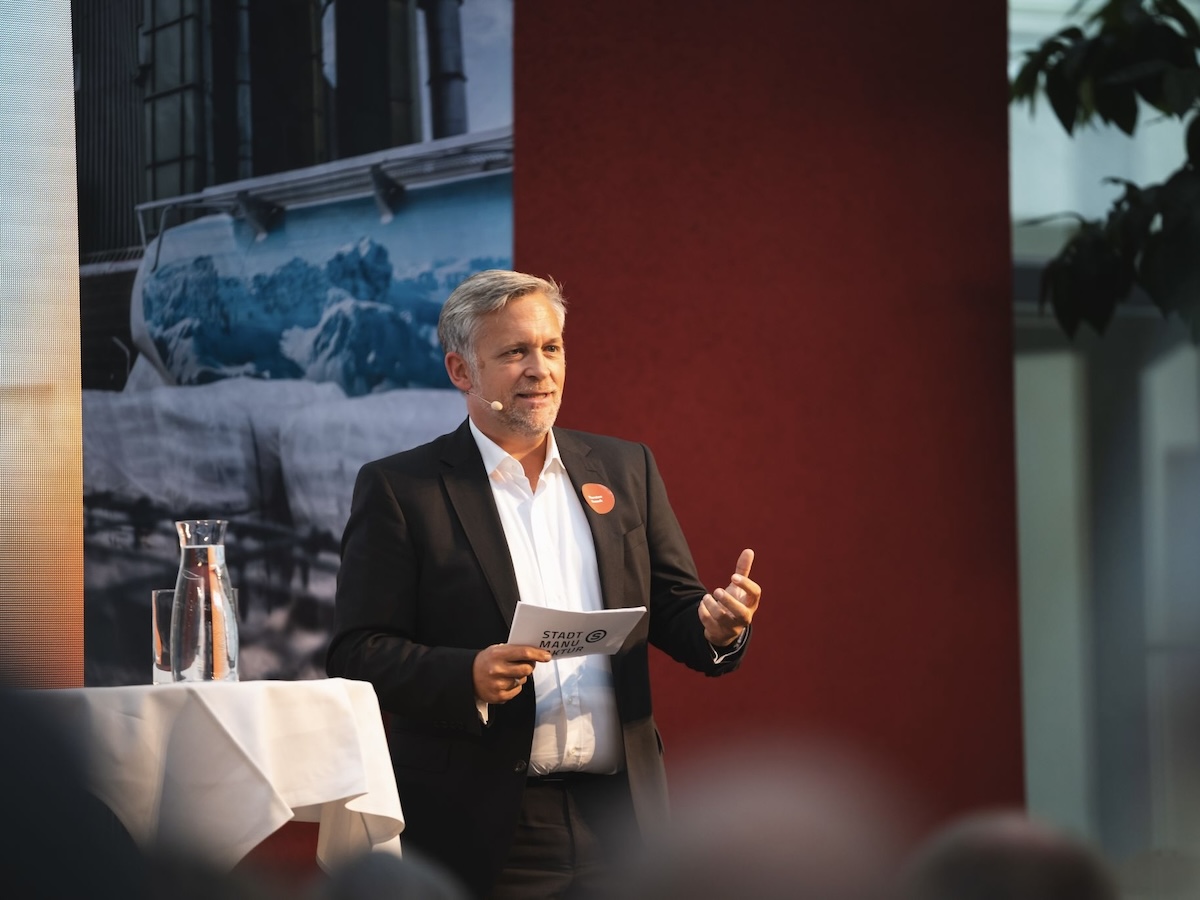
Thorsten Kausch speaks at the Innsbruck Forum in September 2024 about the new role of city marketing companies, among other things
Strong city marketing attracts: Three door openers for strong future alliances
Under these new circumstances, there are three central levers for sustainable, strategic partnerships – so-called “door openers” that city marketing companies can use to strengthen their position, find new partners and secure their funding for the future. Let’s take a look at these three aspects together:
1. Skills and labor shortages as a common concern
Whether gastronomy, retail or industry – all sectors are desperately looking for staff. Location factors such as quality of life, leisure facilities and identification with the city are becoming crucial. City marketing is becoming a location factor for employers. And conversely, employers become important allies because they have a strong interest in developing and communicating an attractive living environment.
The advantage: City marketing works where traditional business promotion ends – in the emotional, in the tangible, in the togetherness. And that is exactly what counts today.
“The future of city marketing lies in strategic partnerships rather than short-term sponsorship.”
2. Transformation requires communication and skills as a mediator
The transformation of cities – whether through the mobility turnaround, inner city redevelopment, digitalization or climate adaptation – regularly causes uncertainty and thus resistance. There is often not a lack of ideas, but a lack of:
- transparency,
- (process) understanding,
- integration and
- emotional involvement.
City marketing can play a key role here: as a mediator, translator and shaper of communication between the city, politics, administration, business and citizens, so that conflicts become opportunities.
Today, participation and strategic communication are not add-ons, but key success factors for change in cities – and an integral part of modern urban development. The aim is to make complex processes tangible – and not just to inform stakeholders, but to involve and activate them.
3. City marketing strengthens democracy
What is often forgotten: Democracy thrives on the local. From encounters, exchange, discourse – but also from tolerating different perspectives. This applies to cities and city marketing:
- The city is a stage for a wide variety of lifestyles and contradictions and thrives on contrasts.
- Especially in today’s world, democracy needs shared spaces and experiences where people can come into contact with each other across bubbles, understand each other’s perspectives and start the negotiation process.
- Democracy thrives on trust, visibility and belonging – these feelings are not created on social media platforms, but in parks, squares, at city festivals, at markets and in meeting formats.
City marketing can create precisely these spaces: It curates experiences, moderates discourse, tells stories that connect – and brings different groups together at eye level. It is the positive stories that increase citizens’ pride in their city and thus create a bond and identification.
The new role: City marketing as an urban platform for the future
Let’s summarize briefly: I am convinced that city marketing needs to redefine its role and structure and position itself as an urban platform for the future. And I can see that cities like Innsbruck or Reutlingen that dare to make this change will gain strength and prospects. City marketing companies like these are becoming the:
- alliance builder between the public sector, business and civil society
- communication hub for transformation
- democracy architect in the public space
This cannot be achieved with old financing models, but through:
- targeted partnerships
- hybrid financing (public, private, eligible for subsidies)
- clear project logic and comprehensible impact measurement
- involvement of new players – from business, culture, education, social affairs
“In a time of increasing polarization and disinformation, city marketing is becoming a democratic infrastructure in the best sense of the word.”
Consequences of the new role for partnerships and alliances
This change in role has key consequences for the management of partnerships – and thus for the financing models of city marketing organisations.
1. New partners become relevant – traditional ones lose exclusivity
The traditional focus on retail and tourism is being expanded to include stakeholders from business, education, health, social affairs and civil society. In concrete terms, this means that many traditional partners (e.g. local chain stores) are losing influence, while systemically relevant employers or foundations are gaining in importance.
New (key) partners are added or given greater weighting. Here are a few examples:
- Companies with an interest in skilled workers
- Universities and educational institutions
- Social and health facilities
- Cultural and civil society initiatives
- Real estate and housing industry
- Foundations with a focus on democracy, participation and sustainability
2. Partnerships are theme- and project-related
We no longer need “the” partnership in the long term, but rather tailor-made alliances for specific projects and goals. Only those who clearly state concrete goals and benefits can attract relevant partners. These can be donors, land donors, multipliers or know-how providers. This makes cooperation more flexible, more effective and easier to communicate (both internally and to the public). This also means:
- more temporary, agile cooperation models
- project-specific pooling of resources
- binding target definition and evaluation
- partner selection follows the objective – not the other way around
3. Benefit orientation replaces pure sponsoring
Partners no longer invest “out of goodwill”, but because they themselves benefit from the indirect effect (e.g. image, securing skilled workers, visibility, trust in urban society). This benefit must be clearly and individually argued by city marketing and achieved through the following new approaches:
- “Win-win stories” instead of blanket sponsorship deals
- cooperative financing (public + private + subsidized)
- combination of image, visibility, co-design
4. Trust, attitude and values come to the fore
In times of social polarization and growing uncertainty, partners are also selected on the basis of content fit, attitude and integrity. The same applies to companies and organizations that pay more attention to the compatibility of values in their cooperation with cities. This leads to:
- value-based partnership models
- transparent communication
- a shared understanding of the city as a vibrant, diverse space
5. City marketing becomes an enabler – not the main player
As discussed above, the role of city marketing is shifting from a “doing” authority to a curating, coordinating and connecting platform. And: good partnerships are not created through control, but through clever moderation, mediation and structuring. This shift in self-image and relationship management is also changing the roles and tasks of city marketing within partnerships:
- platform logic in project management
- promotion of self-organization and participation
- trusting cooperation at eye level
6. Strong stakeholder communication as a success factor
Different stakeholder groups have different information needs. Involving them appropriately and in a targeted manner creates trust and safeguards processes. The prerequisite for such strategic and empathetic communication in stakeholder management is an awareness of the needs and concerns of the people and organizations behind the collective term “stakeholder”. It is important to recognize the respective objectives and to choose appropriate communication – in terms of channel, language, content and timing.
“Good partnerships are not created through control, but through clever moderation, mediation and structuring.”
Conclusion: Common concerns as the basis for strategic alliances – and sustainable financing
The framework conditions for place marketing have been changing fundamentally for years: public funds are often no longer sufficient, subsidies are running out, private funds are more difficult to raise – and at the same time the demands on effectiveness, participation and communication are growing.
The solution is not to return to old financing models, but to realign the partner strategy: city marketing companies must see themselves as a platform for cooperation, communication and democratic cooperation – and involve new and old partners in a project-related, value-oriented and benefit-oriented manner.
Securing skilled workers, urban transformation and maintaining social cohesion are common challenges that require and enable new alliances – between administration, business, civil society and city marketing.
This is the only way to create city marketing that is more than just location advertising – it is an instrument for shaping the future of the city.
Image credit: Stadtmanufaktur GmbH, Flo Gassner (Innsbruck)

Thorsten Kausch
is Managing Director of Stadtmanufaktur and a passionate strategist, initiator and networker
